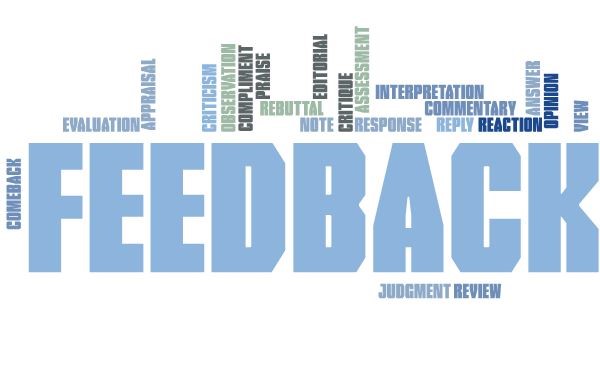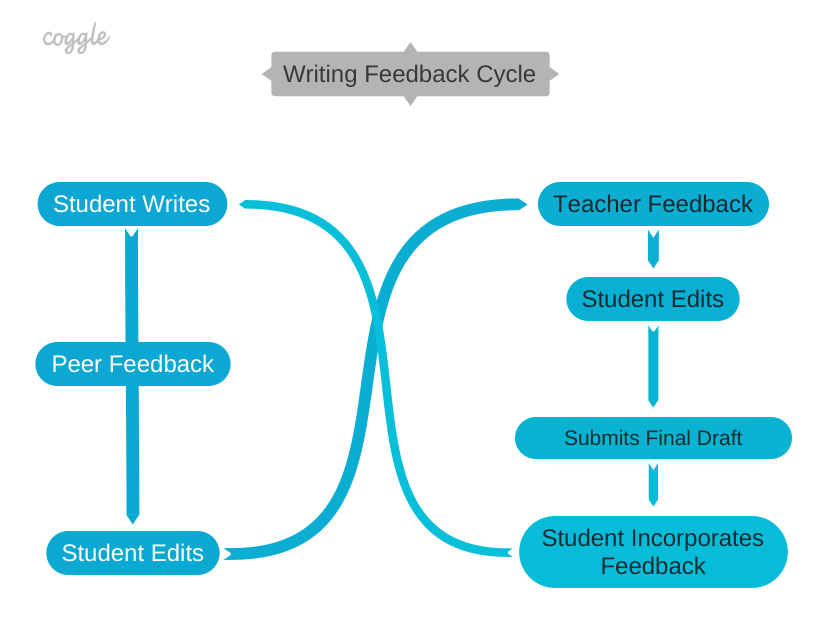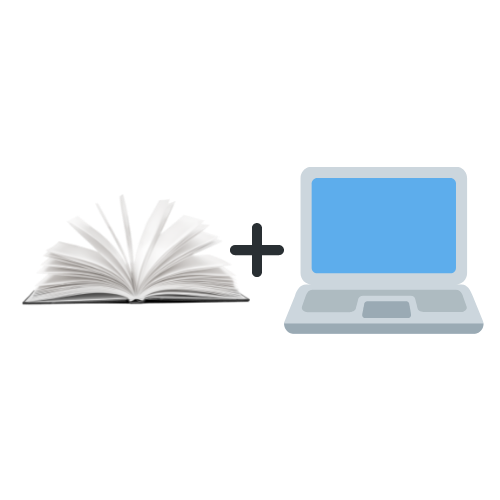
Module 1 focuses on the International Society for Technology in Education (ISTE) Student Standard 1.1, the empowered learner. As an English teacher I am constantly trying to figure out how I can empower my students to take more ownership over their learning and the learning process in general.
My students are currently learning how to write paragraphs while incorporating textual evidence and explanation. ISTE Standard 1.1c is “Students use technology to seek feedback that informs and improves their practice and to demonstrate their learning in a variety of ways”, I used this standard to investigate ways in which technology can empower students to take a greater role in developing their writing skills (ISTE, n.d.). Our current classroom process for writing is we do a reading paired with class discussion, highlighting, and annotating. I present the students with a pre-writing brainstorming session, and then the students write. When they are finished, a few students share, then I grade their writing. I read their writing and assess using our curriculum’s writing rubric for conventions, focus, and evidence. I score each piece and leave each student digital feedback, always incorporating something positive in their writing and something that I would like students to work on the next time we write. It is up to the students to read their feedback and incorporate that feedback into their next piece, occasionally we go back and revise a previous piece.
I have investigated various methods for closing the feedback loop and have been working towards answering the question: what might it look like for students to go from a passive recipient of feedback to an active participant in the feedback loop? As the feedback loop involves not only myself and the student but the peers as well, ISTE Standard 1.1b is also involved in the feedback process: “students build networks and customize their learning environments in ways that support the learning process” (ISTE, n.d.).The ideal feedback loop in my classroom would include feedback from peers and myself.
There are two different types of feedback. Yim et al. (2014) define these two types of feedback as corrective and non-corrective. Corrective feedback is further broken down into direct feedback, commentary feedback and highlighted feedback. I like to refer to this kind of feedback as actionable – the author can take the information and make changes immediately in this current piece or in future pieces. Non-corrective feedback consists of affective feedback and evaluative feedback (Yim et al., 2014). Both types of feedback are essential when looking at student work. Students need affective feedback, defined as “feedback provider writer with encouragement or their own emotional response to the writing” (Yim, et al., 2014). Affective feedback is important everyone needs encouragement, it helps students to know what they have done well and what the reader liked. Evaluative feedback is good for general commentary from the evaluator. Corrective feedback helps communicate where the student can or should make improvements (Yim et al., 2014).
Wiggins (2012) takes the definition of feedback a step further and defines it as “information about how we are doing in our efforts to reach a goal” (p. 11). Wiggins states that feedback should be timely, actionable, tangible, goal oriented, time, ongoing and consistent (2012). As a teacher, this is the feedback I try to leave for my students in our online curriculum feedback system. However, the feedback loop breaks down because it depends on the student going back and reading the feedback. Furthermore the loop continues to break down because I am the only person providing feedback.
In my ideal classroom, the feedback loop would look something like this:

This is my vision for a feedback loop. When students reach the incorporate phase, they should be starting a new writing assignment and incorporating past feedback into their new writing. The curriculum I use does not support peer feedback and editing without sharing computers. In the age of Covid, this is not an option due to the spread of germs. Cloud-Based programs may be a solution to this problem. Having students draft in Google Docs first and asking them to share the document in commenting mode with a classmate allows for real time feedback from peers. It would even allow students who are in quarantine to participate from home, so long as they have a reliable internet connection. This type of group collaboration is supported by Krishnan et al. (2018) who studied synchronous writing collaboration in the middle school setting. They found that students performed better and perceived the writing process better when they were able to collaborate in this way.
A key to the success of having students become active participants in the feedback process is training and practice. Students need to learn how to give actionable feedback and how to receive it and act upon it. Koehler (2016) made feedback incorporation part of her grading process when she was grading undergraduate essays. While I’m not sure that I would put it as part of a grade for middle school students, I like the idea of it being a requirement for each new writing assignment because it would show progress over time. Requiring incorporation of feedback as part of the assignment would also help to close the feedback loop and encourage students to become active participants, thus empowering them to take ownership of their learning. The final step in the writing process would be students making the suggested changes in their writing on Google Docs, and then copying their final draft into our online curriculum for assessment. They would submit both the Google Doc and the assignment in the curriculum, so I could see how their writing developed over the course of the assignment using the revision history feature in Google Docs. By utilizing a feedback system such as this students will have met ISTE standards 1.1b and 1.1c by using different types of technology to demonstrate learning and also by using their network to support the learning process.
I believe that this type of Google Doc collaboration and reflection fits in perfectly with the Triple E framework, as it contributes to Engagement, enhancement and extension of the learning goals in my classroom and in my writing lessons.
On Tuesday of this week, I decided to put this into action in my own classroom. I found a wonderful resource called a “Feedback Chat” on the Learning in Hand blog by Vincent (2019) and used this source in my classroom. What I like about this tool is that it has goal setting and when you print the second page it also has sentence stems that go with each section of the worksheet. The idea is that students review their work, then set a goal for that piece of writing and after they have received the feedback, they reflect on what they will do with the feedback. My class and I had a discussion about the purpose of feedback and its role in making us all better writers. Based on student feedback from this activity, it is one we will be utilizing more often, especially when we get to the essay at the end of our current unit. I also have a Google Form prepared for next week that is a reflection on the feedback loop process and I am looking forward to hearing what my students thought of this new to them process.
Further resources on how to give quality feedback can be found here:
Ferlazzo, L., (2018, November 27). Response: Ways to give effective feedback on student writing. Education Week. https://www.edweek.org/teaching-learning/opinion-response-ways-to-give-effective-feedback-on-student-writing/2018/11
McGuire, B., (2021, March 16). 4 Keys to a successful student feedback loop. American College of Education. https://www.ace.edu/blog/post/2021/03/16/4-keys-to-a-successful-student-feedback-loop
Purdue Online Writing Lab, (n.d.). Instructor’s guide for giving feedback. Purdue University. Retrieved January 16, 2022, from https://owl.purdue.edu/owl/general_writing/the_writing_process/feedback/instructor_guide_giving%20feedback.html
Sweetland Center for Writing, (n.d.). Giving Feedback on Student Writing. University of Michigan.Retrieved January 16, 2022, from https://lsa.umich.edu/sweetland/instructors/teaching-resources/giving-feedback-on-student-writing.html
References
International Society for Technology Education. (n.d.). ISTE standards: Students. International Society for Technology in Education. Retrieved January 9, 2022, from https://www.iste.org/standards/iste-standards-for-students.
Koehler, J., (2016). The feedback loop: When less is more, and when more is less. University of California, Berkeley. https://gsi.berkeley.edu/koehlerj-2016/
Krishnan, J., Cusimano, A., Wing, D., & Yim, S., (2018). Writing together: Online synchronous collaboration in middle school. Journal of Adolescent and Adult Literacy. https://doi-org.ezproxy.spu.edu/10.1002/jaal.871
Vincent, T., (2019, January 30). Guiding peer feedback with a feedback chat. Learning in Hand. https://learninginhand.com/blog/feedbackchat
Wiggins, G. (2012, September). 7 keys to effective feedback. Education Leadership. 70 (1). Yim, S., Warschauer, M., Zheng, B., & Lawrence, J. (2014, October 28). Cloud-based collaborative writing and the common core standards. Journal of Adolescent & Adult Literacy, 58(3), 243-254. https://doi-org.ezproxy.spu.edu/10.1002/jaal.345

3 replies on “Feedback Loop”
This is a great topic. Feedback is such an integral part of our learning and when students are immersed in this routine of giving and receiving feedback, it translates to reflection, goal-setting and collaboration. I like what you said about students becoming active participants in their learning journey. Getting feedback from their teachers and peers will surely help motivate students as they consider their strengths, enhance areas of growth, always seeking to improve.
Thanks for sharing your thoughts. I agree with you that “Requiring incorporation of feedback as part of the assignment would also help to close the feedback loop and encourage students to become active participants, thus empowering them to take ownership of their learning.” Notably, feedback in writing assignments plays a pivotal role in attaining learning goals.
[…] and find a way to close the feedback loop with me and to create a feedback loop with one another. See my feedback loop post here. Students were instructed to use Google Docs to draft their paragraphs and to share their document […]